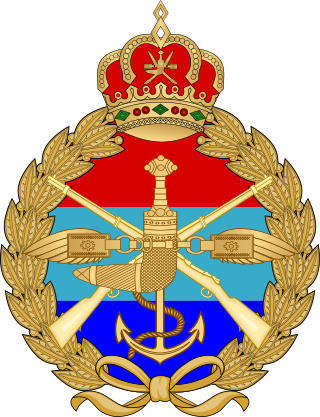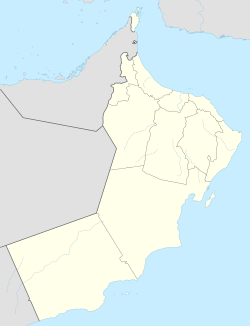
Muscat is the capital and most populated city in Oman. It is the seat of the Governorate of Muscat. According to the National Centre for Statistics and Information (NCSI), the total population of Muscat Governorate was 1.4 million as of September 2018. The metropolitan area spans approximately 3,500 km2 (1,400 sq mi) and includes six provinces called wilayats. Known since the early 1st century AD as an important trading port between the west and the east, Muscat was ruled by various indigenous tribes as well as foreign powers such as the Persians, the Portuguese Empire and the Ottoman Empire at various points in its history. A regional military power in the 18th century, Muscat's influence extended as far as East Africa and Zanzibar. As an important port-town in the Gulf of Oman, Muscat attracted foreign tradesmen and settlers such as the Persians, Balochs and Sindhis. Since the ascension of Qaboos bin Said as Sultan of Oman in 1970, Muscat has experienced rapid infrastructural development that has led to the growth of a vibrant economy and a multi-ethnic society. Muscat is termed as a Beta - Global City by the Globalization and World Cities Research Network.

Ruwi is a commercial hub and the main business area of Muscat, the capital of Oman. Attractions in Ruwi include a variety of multi-confessional religious buildings, a National Museum, a clock tower, and a park. The population of Ruwi is 85,601.

Ghalib bin Ali bin Hilal al-Hinai was the last elected Imam (ruler) of the Imamate of Oman.

Nizwa is the largest city in Ad Dakhiliyah Region in Oman and was the capital of Oman proper. Nizwa is about 140 km (87 mi) from Muscat. The population is estimated at around 72,000 people, including the two areas of Burkat Al Mooz and Al-Jabel Al-Akhdar.

The Royal Army of Oman is the ground forces component of the Sultan of Oman's Armed Forces. It was founded in 1907 as the Muscat Garrison. It has a current strength of 35,000 personnel.

The Royal Navy of Oman, abbreviated RNO, is the maritime component of the Royal Armed Forces of the Sultanate of Oman. Given its long coastline and strategic location along the Indian Ocean, as well as being close to the Strait of Hormuz, the Royal Navy is one of the priorities of the government of Oman. It has a fleet of gunboats, fast missile boats and support, training, cargo and hydro-graphical survey vessels, which can be deployed to defend the territorial waters and coastline of Oman as well as protect tankers passing through the Strait of Hormuz. The Royal Navy's headquarters are in Seeb, near the Muscat International Airport. A modernization program is ongoing, with the objective of creating a first rate fleet.Similarly, the Royal Oman Police's fleet, which operates smaller range boats and patrol crafts, is being updated due to raising tensions in the region.

This page list topics related to Oman.

The Sultan's Armed Forces Museum is a military history museum, located in the 150-year-old Bait Al Falaj Fort, once the headquarters for Sultan Said bin Sultan's Armed Forces, located on Al Mujamma Street, in the Ruwi area near Muscat, Oman. It was graciously inaugurated in 1988 by His Majesty Sultan Qaboos, who was supreme commander of the Armed Forces until his death in 2020.

The Royal Oman Police (ROP), also known as Oman Police, is the main law and order agency for the Sultanate of Oman. It maintains a helicopter fleet and also carries on the duties of safeguarding the long Omani coastline.
Internal Security Service is the national security agency of the Sultanate of Oman. The agency focuses solely upon domestic security while foreign intelligence operations is specifically handled by the Palace Office, which controls external security and coordinates all intelligence and security policies.

The Jebel Akhdar War or the Oman War, also known as Jebel Akhdar rebellion, broke out in 1954 and again in 1957 in Oman, as an effort by the local Omanis in the interior of Oman led by their elected Imam, Ghalib al-Hinai, to protect the Imamate of Oman from the occupation plans of sultan Said bin Taimur, backed by the British government, who were eager to gain access to the oil wells in the interior lands of Oman. Sultan Said received direct financing to raise an armed force to occupy the Imamate of Oman from Iraq Petroleum Company (IPC), a consortium of oil companies that was majorly owned by what is known today as Royal Dutch Shell, Total, ExxonMobil and British Petroleum (BP); the latter was majority-owned by the British government.

Muscat International Airport, formerly Seeb International Airport, is the main international airport in Oman and is located in Seeb, 32 km from the old city and capital Muscat within the Muscat metropolitan area. The airport serves as the hub for flag carrier Oman Air and Oman's first budget airline Salam Air, and features flights to several regional destinations as well as some intercontinental services to Asia, Africa and Europe.

The Royal Guard of Oman (RGO) is the royal guard of the Sultan of Oman. It is a separate service within the Sultan's Armed Forces (SAF) and although equipped to carry out land defense operations, it is not part of the Royal Army of Oman. The RGO is a personal security and ceremonial unit responsible for the protection of the Sultan and other senior members of the Royal Family.

The Yarubid dynasty were rulers of Oman between 1624 and 1742, holding the title of Imam. They expelled the Portuguese from coastal strongholds in Muscat and united the country. They improved agriculture, expanded trade and built up Oman into a major maritime power. Their forces expelled the Portuguese from East Africa and established long-lasting settlements on Zanzibar, Mombasa and other parts of the coast. The dynasty lost power during a succession struggle that started in 1712 and fell after a prolonged period of civil war.
Sultan bin Saif bin Malik was the second of the Yaruba dynasty of Imams of Oman, a member of the Ibadi sect. He ruled from 1649 to 1679. He completed the work of his predecessor, Nasir bin Murshid, in driving the Portuguese out of Oman. Their last base in Muscat fell to his forces in January 1650. He built up Omani sea power, taking the fight against the Portuguese to their bases in India and East Africa. During his reign the country was peaceful and increasingly prosperous.

The Sultan's Special Force (SSF) — Arabic: قوات السلطان الخاصة, transliterated:Qawat al-Sultaniya al-Khasah is a separate force branch within the Sultan's Armed Forces (SAF) and although equipped to carry out land defense operations, it is not part of the Royal Army of Oman.

The Northern Frontier Regiment (NFR) was formed in March 1957 and was one of the first two properly constituted infantry regiments that Sultan Said bin Taimur of Oman formed. The regiment's crest is two crossed drawn traditional Khanjar daggers pointing downwards, with scrolls carrying the regimental title in Arabic i.e. Kateeba al Hudood al Shamleeah. Members of the Regiment who served in Dhofar are entitled to wear the General Service Medal Oman, its ribbon design illustrated on the right.

The Muscat Regiment (MR) was formed in March 1957 and was one of the first two properly constituted infantry regiments that Sultan Said bin Taimur of Oman formed. The regiment's crest is two crossed Omani swords overlain vertically with a single traditional Khanjar dagger sheathed, with scrolls carrying the regimental title in Arabic. The regiment's headdress is a distinctive scarlet Tam o' Shanter style cap, rather than a beret. Members of the Regiment who served in Dhofar are entitled to wear the General Service Medal Oman, its ribbon design illustrated on the right.

The Royal Office transliterated:maktab al sultani is one of the most senior and therefore powerful ministries in the Sultanate of Oman. It is a government body that has most influence in national security and intelligence issues and the minister in charge has been the de facto national security advisor to the Sultan. The Palace Office also acts as a foreign liaison focus on all international intelligence and security matters.
The Muscat rebellion was an uprising in 1913 led by Sālim bin Rāshid al-Kharūṣī against the authority of the Sultans of Muscat and Oman. The rebels established their own state, the Ibāḍī imamate. Its causes lay in a deep-rooted rivalry between northern and southern tribes of Muscat and Oman. It began in May 1913 in Tanuf. On 5 June, the rebels captured Nizwa, and on 20 June they captured Izki. By this time, the rebels had also surrounded Samail. On 24 June, the rebels captured al-`Awabi. By July, the situation had gotten so dire that the British government sent a small garrison to Natrah to aid the sultan of Muscat, to no avail. In August, the rebels captured Samail. Also in August, the rebels launched an offensive towards the coastal side of al-Jabal al-Akhda, and Nakhl was besieged on the 4th. Nakhl ultimately fell at the beginning of April 1914, after the desertion of several of the imam's reinforcement contingents. In April 1914 British cruisers bombarded Barkah and Qaryat to dislodge rebels from those settlements.
















